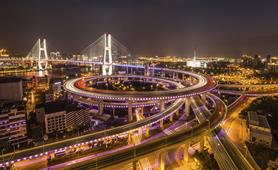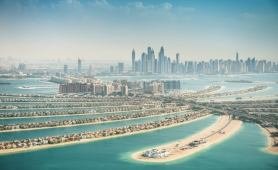04 August 2015
Metropolis
The urbanization and the cities of the future

Today in the world there are 11 cities with more than 10 million inhabitants, and 34 with more than 5 million. 243 million Americans live in three percent of urban territories of the United States, and in Tokyo and its metropolitan area – which is the most productive in the world – reside 36 million people. 12 million live in the heart of Mumbai, and nearly as many in Shanghai. In a planet of large spaces, we choose the cities.
Traveling between remote locations or working on web has become very practical and economical, nevertheless, an increasing number of people are grouped in large metropolitan areas. Every month, 5 million people are going to live in developing countries’ cities, and in 2011 more than half of the world population was urban.
Human metropolisation is an unstoppable historical fact. So it is the idiosyncrasy of the metropolis to comply with the laws of the States that have around (for example London and England).

Singapore, Hong Kong, Dubai. The American economist Paul Romer called them “charter city”, extraterritorial cities not subjected to the laws of the country they belong to, but to special rules, signed and respected by those who live there. New City-State, we might say, are the contemporary version of the Greek poleis or the medieval communes. Practically – in the cyclical history – the new form through which cities are taking their revenge against the states.
Edward Glaeser, professor of Economics at Harvard University, is perhaps the world leading authority in the study of cities, that he defined “the greatest invention of mankind”, the true engine of progress.
As Adam Smith tried to understand the causes of the wealth of nations, Glaeser has focused on the causes of the wealth of cities and the interaction between them and the national welfare. His analysis revolutionized the urban economics and offered a new perspective on policies to promote the economic development of cities and regions where they are located.
In his essay The Triumph of the City – in which he shows all his love for the New York City of his childhood – explains how today large urban centers “enhance the forces of humanity,” multiply the interactions between great ideas, attract talent and capital, and are the only place where people have the chance to raise their social status.
According to someone, the next big social conflict will be among city dwellers and those who live around them. According to others, this conflict will never take place and the whole of humanity will eventually coalesce around a few, huge urban centers. For others, finally – including Paul Romer – should be the states themselves to take charge of building the city charter in their territory, offering the possibility to create from zero its own rules, suitable for those who want to live or who want invest. Then circulating them, by osmosis. Whatever it happens, however, it seems that future belongs to cities and their inhabitants.

Lagos - Riyadh - San Diego
